In The End, We’ll All Become Stories: Why Storytelling And Content Marketing Are A Match Made In Heaven
 Content marketing is hot. Like, melted iron red-hot. In a survey of more than 3400 marketers across the globe — including both B2B and B2C marketers — a whopping 70% said that they are actively investing in content marketing as a part of their overall marketing strategy.
In the same report, 24% of marketers claimed that they plan on increasing their investment in content marketing in 2020, so it’s a no-brainer that all businesses would want to leverage it to their advantage.
However, with so much content being produced and added to an already heavily saturated pile of content on topics covering the length and breadth of human knowledge, who will be able to grab a piece of the pie?
With so many marketers hoping to reach their target audience — wanting their content to relate with them — only the ones who focus on a crucial human aspect will do so.
Since time immemorial, humans have been captivated, influenced, and compelled by stories and narratives. Whether it was our ancestors gathered around a fire to plan how to hunt for their next meal, to now — when we look into a screen to learn more about things we care about — emotions have always been at the forefront of our decision-making, which is what a good story is able to alter with ease.
With the plethora of content being produced, marketers will only reap the true benefits of their strategies if they keep storytelling at the heart of their messaging and communication to their audience.
Content marketing is hot. Like, melted iron red-hot. In a survey of more than 3400 marketers across the globe — including both B2B and B2C marketers — a whopping 70% said that they are actively investing in content marketing as a part of their overall marketing strategy.
In the same report, 24% of marketers claimed that they plan on increasing their investment in content marketing in 2020, so it’s a no-brainer that all businesses would want to leverage it to their advantage.
However, with so much content being produced and added to an already heavily saturated pile of content on topics covering the length and breadth of human knowledge, who will be able to grab a piece of the pie?
With so many marketers hoping to reach their target audience — wanting their content to relate with them — only the ones who focus on a crucial human aspect will do so.
Since time immemorial, humans have been captivated, influenced, and compelled by stories and narratives. Whether it was our ancestors gathered around a fire to plan how to hunt for their next meal, to now — when we look into a screen to learn more about things we care about — emotions have always been at the forefront of our decision-making, which is what a good story is able to alter with ease.
With the plethora of content being produced, marketers will only reap the true benefits of their strategies if they keep storytelling at the heart of their messaging and communication to their audience.
Why storytelling and content marketing are a match made in heaven.
Click To TweetDownload Your Own Editorial Calendar Template
When you download this editorial calendar template, you’ll have planning down to a science in no time. If you struggle with keeping track of deadlines, remembering what projects you had planned, or who is in charge of what, this template will be your savior.What Exactly is Storytelling?
In the simplest of words, a story is an account of fictitious or real people and events told for the purpose of entertainment, and storytelling is the art of communicating a message in the form of a story. The storyteller conveys a message in order to connect with other people. For the case in point, the storyteller would be the marketer, and people would be their target audience. Some of the elements of a good story include a protagonist, a number of other characters, a plot, a conflict or obstacle, a theme (one binding idea that repeats throughout), and a narrative arc. This is the reason why classic fairy tales were able to teach the listener or reader (often children) a lesson by embodying all of these points. When done correctly, research shows the powerful impact storytelling can have on people:- Stories are 22 times more memorable than facts and figures alone.
- Human brain neural activity increases by 5 times when listening to a story.
- 92% of consumers want advertisements to feel like stories.
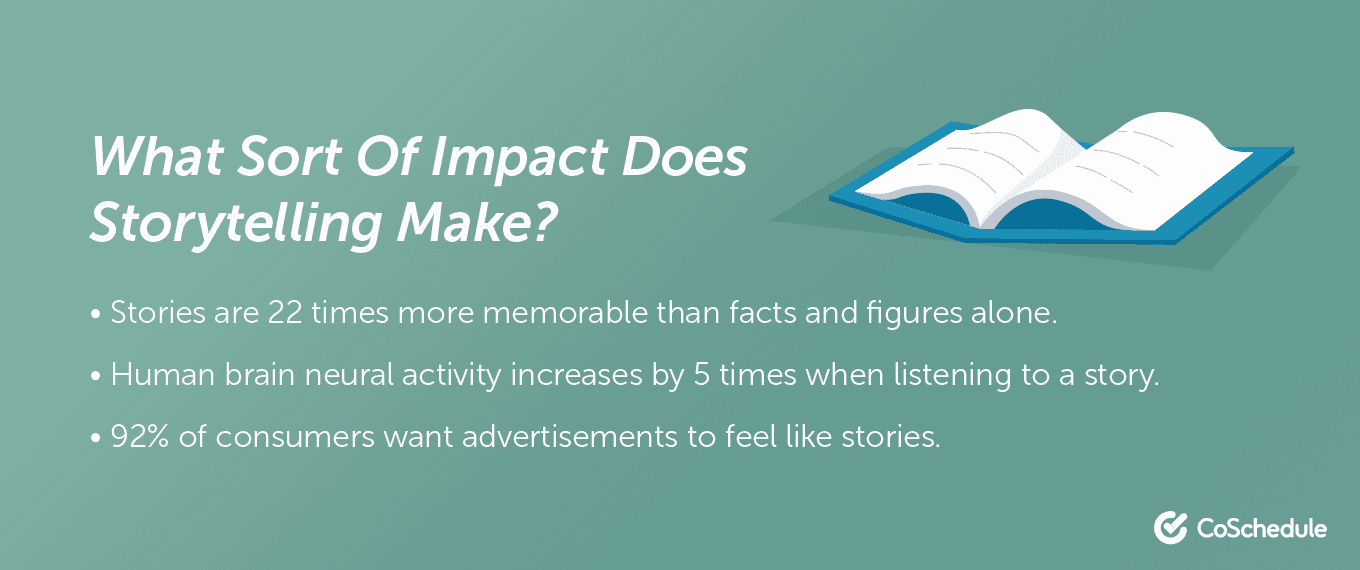
Why is Storytelling so Important to My Content?
Ever wondered why the advertisements of famous brands, like Cadbury, Asian Paints, Pepsi and the likes, are so successful? Their deep pockets certainly set a good starting point for success, but that’s not all it takes to achieve the kind of success these brands have achieved. If you look at the commercials for each of these companies carefully, you’ll notice one common thread: they all tell a story. Here are some of the more tangible reasons why storytelling is so crucial to the success of your content marketing efforts.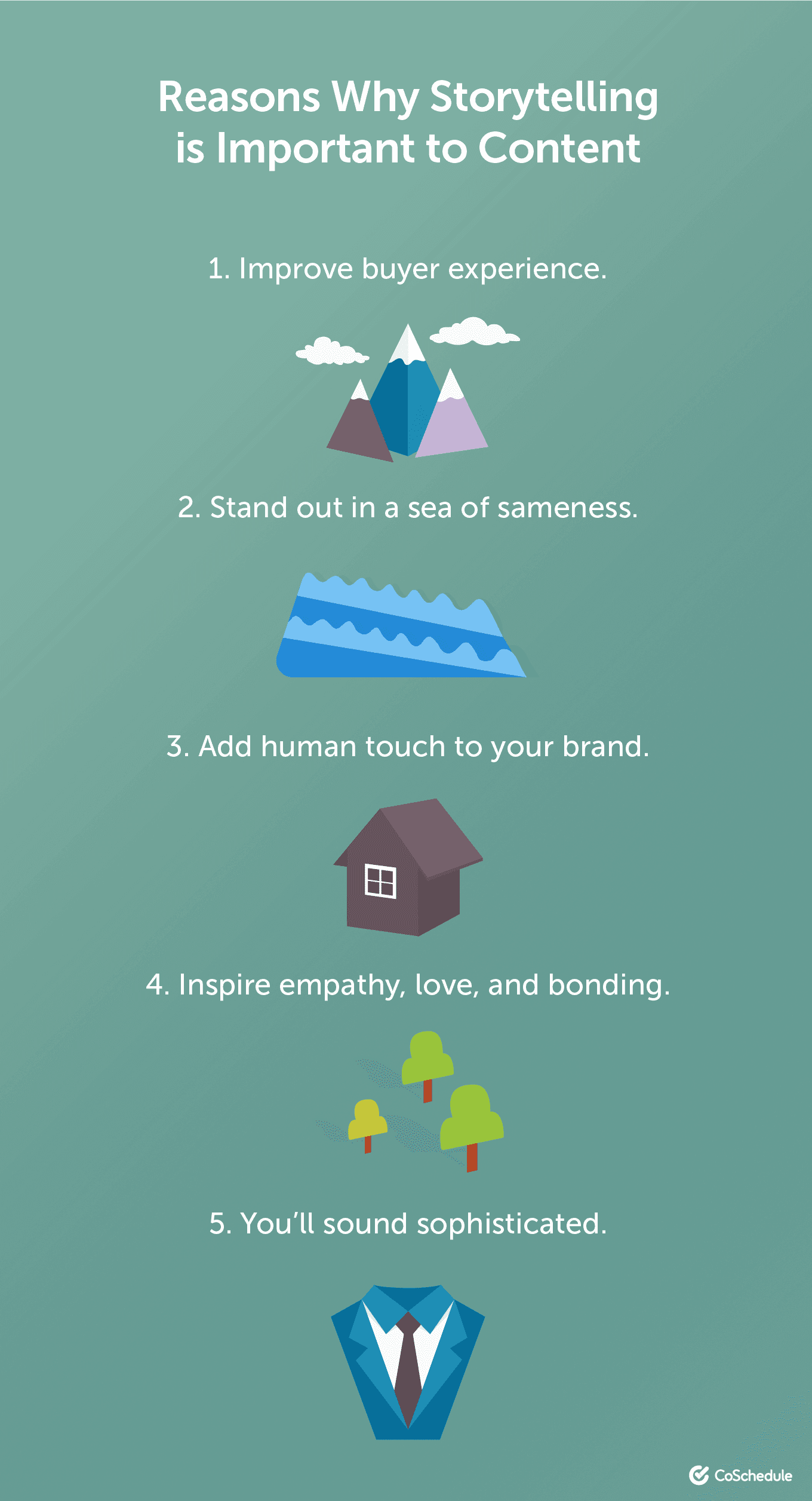
Stories Help Improve Your Buyers’ Experience
Here’s a question, what do you think is a better approach: listing down the benefits of your products or services with a large piece of text, or informing your audience how it will add value to their life through the use of a story? The latter, right? Successful storytelling can invoke the reactions you want your audience to take with an apparent ease. When you base your content marketing efforts around stories, your prospects and potential customers will get something more than just plain old features and facts. They will know and understand why they need your product and be ready to take the suggested action.Successful storytelling can invoke the reactions you want your audience to take with an apparent ease.
Click To TweetStories Help You Stand Out in a Sea of Sameness
Chances are, whatever product and services you’re offering, already has some competition in the market. If not, just wait before a hundred lookalikes pop-up. The thing that will really distinguish your brand from your competitors is the story you tell them and whether it resonates with them. You’ve certainly seen Nike or Coca Cola’s commercials — they’re memorable and unique because they look like a tale. When you add a story to the content you churn out, your audience will have your brand on the top of their minds and think of it whenever they need the services or products you offer.Stories Add a Human Touch to Your Brand
People don’t want to be friends with your business; however, when you add a human element into your content marketing efforts, they will feel like they know the characters of the story you’re trying to tell. If you use this opportunity to highlight and share the same problems they have and offer a solution, your brand becomes an obvious choice for them.Stories Inspire Empathy, Love, and Bonding
Stories are not just about our fiction or imagination; there is real science behind the same. Stories are known to increase the levels of Oxytocin — a hormone that promotes the feeling of empathy, love, and bonding in the human body. Our brains are actually designed to connect better with stories.Stories Make You Sound Sophisticated, Not Sales-y
“Buy our product because it’s the best one on the market — plus it’s affordable, and it has great features.” That statement sounded dry and unconvincing, right? More often than not, brands and marketers end up taking a sales-y approach to sell their products or services. When you promote your business and its offerings through a story, you’re not trying to convert the audience to buy your products, you’re just sharing an experience and leaving the decision up to them. People are much happier to make a purchase when they feel like they are the ones making the choice.7 Examples of Storytelling in Content Marketing for Your Brand
We want to offer some real-life examples of how you can use storytelling in your marketing strategy, so you can get a better feel for how to implement this technique.Land Rover Showcases How the Best of Stories Can Come From Anywhere
In celebration of their 70th anniversary, Land Rover brought to life the true story of, The Land of Land Rovers; a remote village in the hills of the Himalayas on the Indo-Nepal border. The video tells the story of the local drivers who rely on a fleet of meticulously maintained 1957 vintage Land Rover vehicles to provide transport and supplies along the treacherous mountain roads between two small villages, Maneybhanjang and Sandakphu. To bring this remarkable story to life, Land Rover’s team made the village of Maneybhanjang their home for 10 days in order to get to know these brave drivers and experience their everyday life. The end result delights the viewer with its stunning cinematography, while hearing from the drivers and villagers only further reinforces the incredible off-roading capabilities of Land Rover vehicles. [embed]http://When you find stories that touch people's hearts, invest in bringing them to life.
Click To TweetIkea Singapore Highlights the Power of Humor in Storytelling
Every company speaks at length about the values of their products and services, but how many of those successfully turn their offerings into a laugh-out-loud, hilarious, yet extremely relatable story? Consider taking a page from IKEA Singapore’s Shelf Help Guru campaign. The video campaign stars Fille Güte, a “Shelf Help Guru (pun intended),” who wants to take Ikea’s customers on a journey of “shelf discovery” to improve their private lives in areas that are the most private to them: their bedrooms and bathrooms. By cheekily using scenarios and funny puns to illustrate practical store and furniture solutions from Ikea, the video shines through. It captivates the viewer by making a spot on use of humor, while positioning Ikea as the go-to retail store for home improvement, furniture, and beyond. [embed]http://Sanlam Bank Elucidates How Stories Can Alter Habits
Despite the looming risk of being outdone by their consumer counterparts, the banking, financial services, and insurance industries can still put modern human reality at the heart of their stories. The following example from Sanlam Bank, a South African financial services group, may not particularly be a tearjerker, but it firmly establishes itself as an example of storytelling that helps people improve their lives for the better. In South Africa, research showed that most people do not save much of their salary incomes, of an extent that household debt averages about 75% of their after-tax income. To educate the countrymen about the importance of saving money, Sanlam Bank launched a 5-part web series called “One Rand Man”, featuring a young professional who embarks on a journey through a social experiment – getting paid only in one Rand coins. The video series documents his trials and tribulations of having to pay for everyday expenses in coins. [embed]http://Zuora Showcases How to Build a Story Around Change
We’ve talked about the different elements of a story, but if we had to choose just one key element of every great brand story, it would be change. Yes, you read that correctly. Change produces much-needed tension and gives purpose to a story. It isn’t as straightforward as solving a problem. It involves embarking on a long-haul of a journey, facing difficulties along the way, refusing to ever give up, and pressing on with head strong-willed and unnerving. Through this voyage, challenges are overcome and solved — resulting change. Zuora’s talks about how our consumption habits are evolving from a product economy to a subscription economy. Few brands have been as successful with using change as the basis of their brand storytelling as Zuora, and this is one of the best B2B brand storytelling examples we’ve ever seen. The Subscription Economy referred to here, is a term coined by its founder, Tien Tzuo, which refers to a business evolution where consumers prefer to pay for duration-based (weekly, monthly, and so on) subscriptions for a service instead of a one-time payment for lifetime usage. Practically all of Zuora’s marketing efforts and brand strategy revolve around this narrative.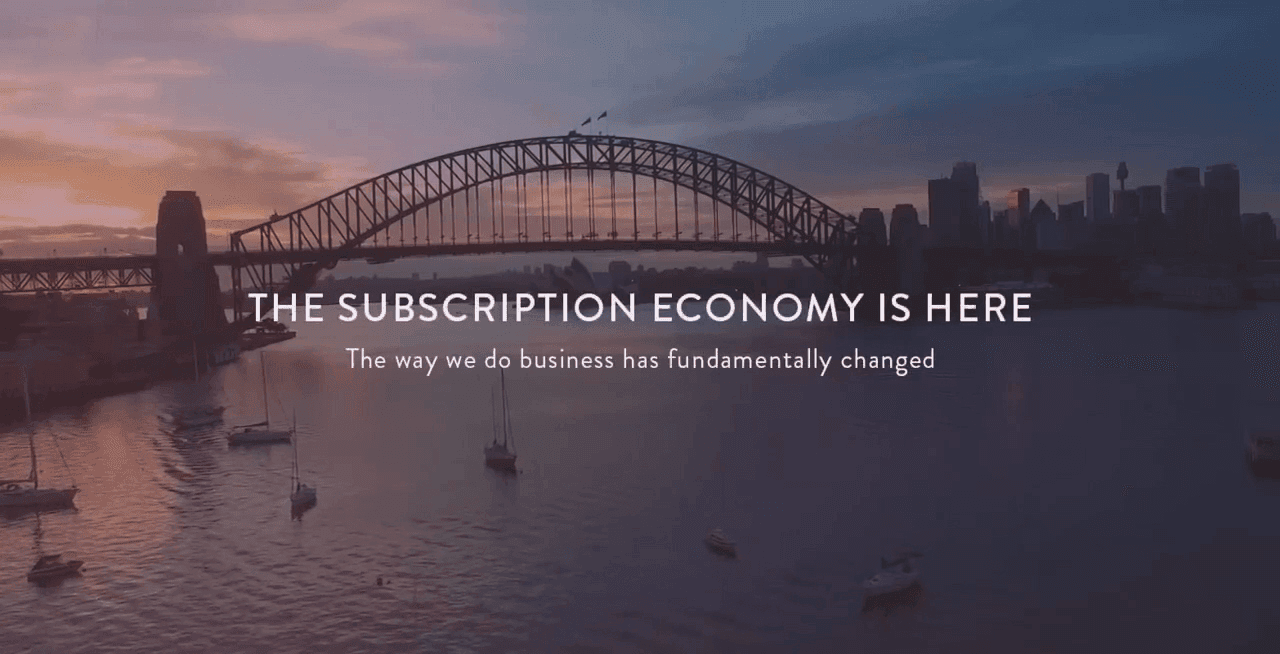 Like all good stories, the presentation depicts the before and after, and beyond. It talks about companies who accept and embrace the incoming change and the benefits of the new model, and the consequences of becoming obsolete for those who fail to adapt to the same. If you come to think of it, it's a change presented in the form of a battle.
What we can learn from Zuora’s brand storytelling is its focus on selling change, as opposed to selling products. By providing a context to how an evolution in your vertical is important for your audience to know, you can gain expanded reach and connect with them — rather than simply talking about your product.
Like all good stories, the presentation depicts the before and after, and beyond. It talks about companies who accept and embrace the incoming change and the benefits of the new model, and the consequences of becoming obsolete for those who fail to adapt to the same. If you come to think of it, it's a change presented in the form of a battle.
What we can learn from Zuora’s brand storytelling is its focus on selling change, as opposed to selling products. By providing a context to how an evolution in your vertical is important for your audience to know, you can gain expanded reach and connect with them — rather than simply talking about your product.
Evernote Brings Human Emotions to the Forefront of Its Stories
Evernote founder, Stepan Pachikov, is known to have dreamt of possessing a photographic memory. That way, he believes his experiences could last longer than a fleeting moment before it became etched in the memory. The storytelling of Evernote, the note-taking app, as a brand is one of a visionary outlook fascinated with the fragility of life, the mind, and the human memory.99% of every person is the memory of what he or she knows (…) What you remember about your life is what makes you you, and me me. – Stepan Pachikov[embed]http://
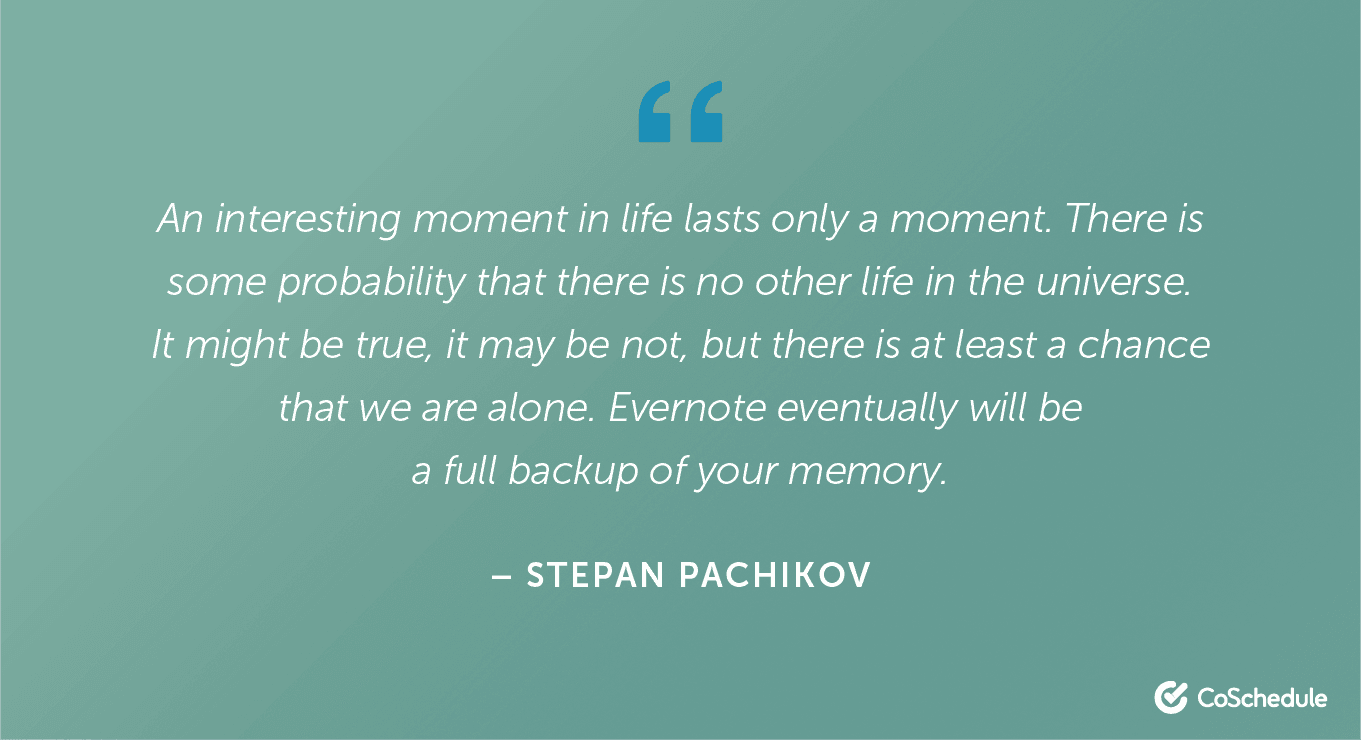 Evernote’s adoption of a universal language for brand storytelling to spark a more human and relatable experience is simply remarkable. In fact, if there were ever a competition of linking a brand’s story to a more universal one, Evernote would take the cake.
Evernote’s adoption of a universal language for brand storytelling to spark a more human and relatable experience is simply remarkable. In fact, if there were ever a competition of linking a brand’s story to a more universal one, Evernote would take the cake.
Universal language for brand storytelling can spark a more human and relatable experience.
Click To TweetSpotify Leverages Data to Tell Unique Stories
One of the brands, which makes use of data to tell stories, is obviously Spotify — thanks to its collection of data about what songs, playlists, and artists its millions of global users engage with. The music streaming service combines this information with listeners’ location data and demographics — using it to create original content for its Spotify Insights blog, which is now not so active and mostly replaced by For The Record.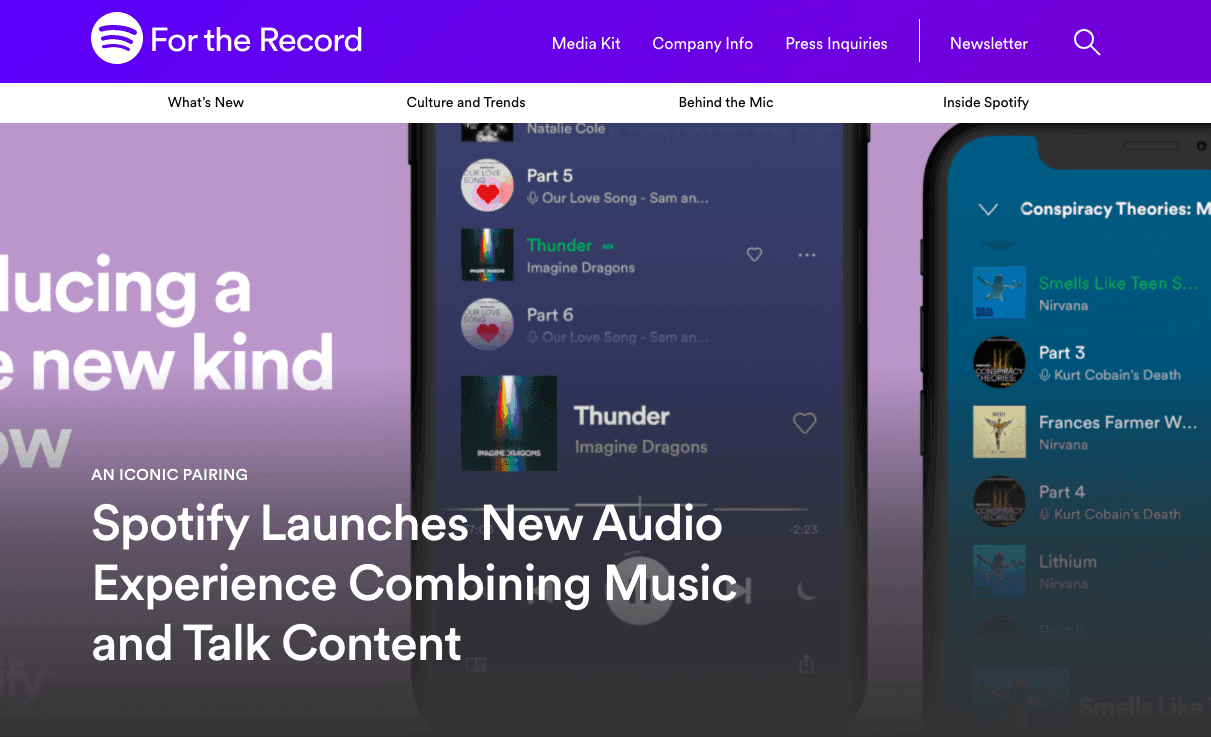 In 2017, one blog post on the website looked at how students in the U.S. listen to music, using data to create an interactive microsite looking at how different colleges and universities in the U.S. listen to music.
This content helped reveal insights, such as where the most listening took place, the diversity of the music listened to, and the most popular genres. The findings included the fact that Penn State University had the highest percentage of “party playlists” in the United States.
Using internal data in this way helps brands, like Spotify, to create original stories based on insights that only they can access, helping them to differentiate themselves from their competitors.
In 2017, one blog post on the website looked at how students in the U.S. listen to music, using data to create an interactive microsite looking at how different colleges and universities in the U.S. listen to music.
This content helped reveal insights, such as where the most listening took place, the diversity of the music listened to, and the most popular genres. The findings included the fact that Penn State University had the highest percentage of “party playlists” in the United States.
Using internal data in this way helps brands, like Spotify, to create original stories based on insights that only they can access, helping them to differentiate themselves from their competitors.
Salesforce Lets Their Customers Tell Its Story
Ah, how would this article ever be complete without mentioning the B2B behemoth, which gave IBM a run for its money back in the day? To this day, on their website, when you click on the “Customers” tab, you don’t just find a bunch of recognizable, big company logos or praiseworthy testimonials. What you find, instead, are customer success stories, which tell the story of Salesforce’s success. For example, “Western Union moves money for better with Salesforce” shares not just the story of Western Union, but also its CEO — a Turkish-born immigrant who used to send money to his father back home. Then, the story leads into a short history of Western Union and describes how the company helps people send money across the globe to support their families and provide education for their children. Only after telling a compelling story about its customer does Salesforce mention how it fits into the picture. This, among the other stories in Salesforce’s Customer Success stories page, are powerful examples of how brand storytelling doesn’t have to mean you need to be telling your brand’s own stories. Putting customers in the lead role always makes a much more powerful point about the value of your brand.What Makes for a Good Story in Your Content?
No matter what story you are telling, below are some of the parts in your story in which you cannot miss. Moreover, by following these, you can make your existing brand stories more engaging. Let’s have a look.Choose a Relatable Main Character to Personalize Your Story
Here’s a fact: people don’t like reading abstract, boring texts or watching videos with the same old story arc. Hence, it becomes essential for you to tell the story with a relatable character in it. By telling the story from either your own or someone else’s point of view (give this character a name, even if fictional), you are more likely to help your viewers and readers relate with your story and your larger message.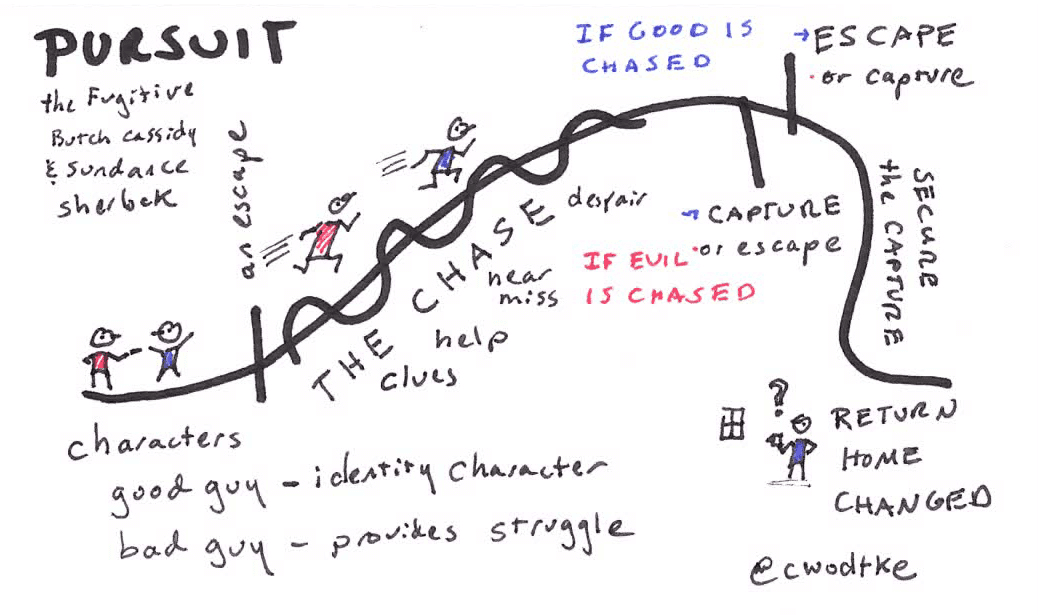 Make the storyteller look as similar to your audience (customers, users, readers, etc.) as possible and have the same challenges and fears as them. This approach would be perfect for a marketing campaign where the main character talks about the product or service, answering the possible questions that the audience might have.
Make the storyteller look as similar to your audience (customers, users, readers, etc.) as possible and have the same challenges and fears as them. This approach would be perfect for a marketing campaign where the main character talks about the product or service, answering the possible questions that the audience might have.
Bring Your Story to Life Through the Use of Emotions
Nostalgia, surprise, humor, admiration, respect, or even fear — your story should bring out an emotional reaction from the audience. As we mentioned early on in this article, emotions are what motivates people to engage with your business, not anything else. This becomes super critical for you to get right without any hiccups. To elucidate this point further, let’s look at an example from SolidWorks Company. This company manages to wrap a bunch of technical information for industrial designs into funny stories. For instance, they tell you how their solutions can help you count how much material you would need to board up your door in case of a zombie apocalypse. Clever, huh? The global IT giant, SAS, also uses this trick by showing on their blog how you can visualize the data, so that it looks like a cowboy hat. Those things make people smile, and it’s the perfect emotion to start with.When Writing Content, Think Like a Journalist
Some of the best storytellers in the world include authors, filmmakers, and of course, journalists. Which is why in 2011, the marketing team at Nissan, the Japanese automobile company, realized that spreading press releases and standard advertising did not help establish a connection with their target audience. The company embarked on a journey to create its own content lab in the house. To this goal, Nissan hired former journalists who started to look for stories and data inside the brand. They searched for material that would be attractive to consumers across the world on social media. Now, almost all the big international companies have such laboratories. Companies such as Coca-Cola, Walt Disney, Apple, Cisco, American Express, etc., use stories as the basis of their content campaigns. Of course, not everyone can create a content laboratory, but the point here is to think like a journalist when you’re creating content. Think about what people would like to hear, see, read, and watch.Think about what people would like to hear, see, read, and watch.
Click To TweetSupport Your Story With Data
Can you guess what differentiates a remarkable story from an average one? Deep rooted research, insights, and data. Before you write one, always do thorough research to find statistics which are staggering, thought-provoking points of data. Also, checkup on facts and look for rare, exciting, and trivial information about your topic. Your stories can be flavored by specific data aimed at people with rational thinking. This information can then be an additional argument for getting your product sold. Which of the following examples sound more convincing to you?- Security violations are a serious problem for large companies these days.
- Did you know that 60% of security violations take place in enterprises?


